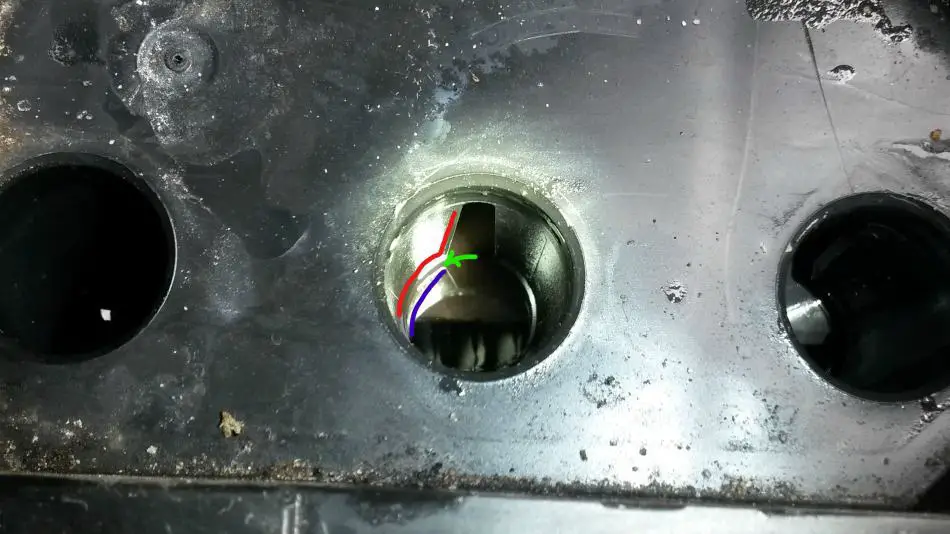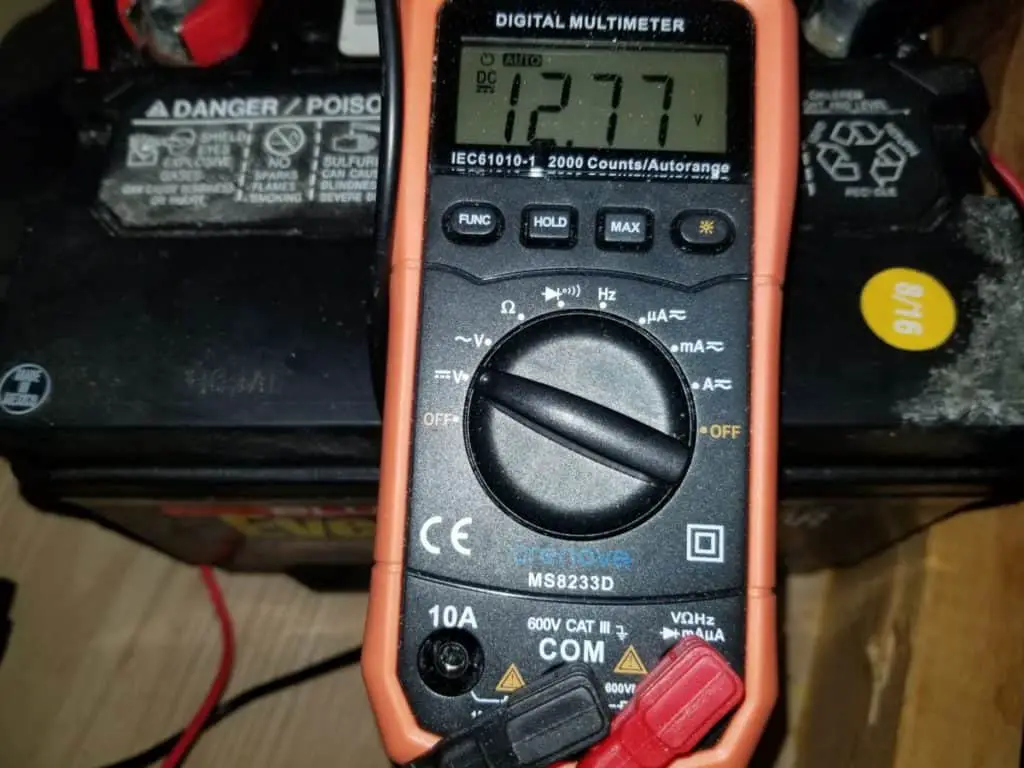If you’re looking to buy a new car battery, or any 12-volt lead-acid battery for that matter, it’s normal to wonder if the battery you’re about to buy comes with a full charge.
Modern car batteries are charged prior to being sold. A dated sticker on the top of the battery will indicate the last known verifiable charge. Lead-acid batteries self-discharge at 5% per month while unused, so it is best practice to buy the newest one you can find.
A while back, the inside of the battery was actually dry and it had to be filled with the electrolyte solution at the time of purchase.
These days, you can just pick it up off the shelf (watch out, they are heavier than they look!) and take it to the register. You’ll pay the sticker price and a refundable core charge for when you return your old battery to be recycled.
You’ll notice on the top of the battery that there will be a sticker relaying the pertinent info you would want to know about the battery’s capacity, and there will also be a small round sticker on there somewhere that has a date on it.

It’s best practice to get the newest battery you can find but I wouldn’t really bat an eye if it were 3 months old or less. Beyond that, I’ll probably dig towards the back or shop around if I’m not desperate — but if you’re looking for a car battery you’re probably in a desperate state.
If you want to know the state of charge of your current battery so that you can have a heads-up on when it is going bad and might give up the ghost, this easy to use battery tester from Amazon can give you the opportunity to buy the newest battery you can find so that you can plan ahead and not be stranded in some unknown location looking for a jump.
Generally, lead-acid batteries will lose about 4-5% of their charge every month by simply sitting there. This is called “self-discharge” and it is completely normal in every type of battery but the rate of self-discharge varies based on the type (alkaline, NiMH, Lithium-ion, etc.).
Keep in mind that lead-acid batteries (and all batteries for that matter) enjoy being at a full state of charge at all times. If the battery has been sitting for 6 months or 12 months on a shelf, the reversing of the chemical reactions inside the battery as it losing its charge will lead to the plates beginning to sulfate.
The longer the sulfate sits on the lead plates, the harder it becomes and your battery will lose some of its effectiveness. Over time, this problem will just get worse. That’s why I would recommend sticking with a battery that is not older than 3 months if you have the choice.
Should I Charge a New Car Battery After Purchase?
If your battery is less than 3 months old at the time of purchase, you’re likely going to get it to a full-charge just by driving home. However, it is not a bad idea to connect it to a quality battery charger after arriving home. I prefer this model and I use it pretty much exclusively with my indoor battery bank and my auto batteries.
It applies a smart and gentle charge and it’s safe to leave connected to your car battery indefinitely, so if you leave your car unused for certain times of the year you can keep your battery from self-discharging while you’re away.
If your battery were to ever completely die, for whatever reason, this charger could bring it back from a full discharge in 8-12 hours, depending on the size of your battery.
Regardless of the charger that you have, it is good practice to hook your car battery up for a designated charge every 3 months or so just in case your car’s alternator isn’t fully topping off your battery (which can easily happen depending on your driving habits). Short drives with lots of waiting in traffic and lots of turning on and off of the key will definitely take its toll on a battery.
With a smart charger like the one I mentioned above, you can safely hook it up to your car battery while the battery is connected to your car.
When taken care of with quarterly checks on the electrolyte levels (for a flooded battery that has removable caps, not a sealed battery), then you can likely tack on an additional year or more out of your car battery’s lifespan. Mine is from the summer of 2016 and is still performing great with my quarterly checkups.
A final thing to note is to make sure the electrolyte levels are good after you first charge it if you have a flooded lead-acid battery with the removable caps. Being new, they shouldn’t be low to begin with but it’s always good to check before the first charge. If the water is still above the plates, bring it to a full charge. Then, bring the water levels up to where they should be.
I find it safest to add distilled water (not tap water!) to the individual cells with a plastic syringe that is used for children’s medicine. It prevents overfilling and splashing battery acid by pouring from a jug.

Can I Test the Battery I Want to Buy with a Multimeter?
I would do this if possible, but batteries come with caps on the battery terminals that protect everyone from them shorting out on something, but the caps also indicate if they’ve been tampered with.
You might be able to get away with it at Walmart if no one is looking but I’m sure that the employees wouldn’t be happy about it since it is off-putting to the next person who might buy that battery if you choose not to keep it.
You definitely won’t get away with it at a smaller store that exclusively sells batteries.
Still though, bringing the multimeter along probably isn’t a bad idea just in case you come across a battery that has a different cap than I’m used to seeing. Maybe yours won’t be tamper-proof.
In that case, set the dial on the multimeter to volts direct current, and give it a go! An ideal reading will probably be between 12.5-12.7 for a battery that has been sitting. The closer to 12.7, the better!

Know that merely testing a battery’s open circuit voltage isn’t going to tell you too much. To really find out the health of the battery you would want to test the specific gravity of each of the individual cells with a hydrometer — and you certainly won’t be doing that in a store.
So, just rest easy that if your battery is under 3 months old, you’re going to be fine — unless you just happened to buy a dud of a battery which would be a very rare thing to happen. In that case, that’s why it’s important to purchase from a store that will have a warranty behind their battery.
Walmart (like them or hate them) has a great policy the last time I checked and will honor a 3-5 year warranty depending on which battery you choose.
Let Me Know How it Goes!
I hope this helped you out and answered your questions. If I left anything out, let me know with the email below and I’d be happy to update this post! I enjoy sharing what I’ve learned over the 6+ years I’ve been involved with batteries and generators, and always love learning something new!
contact.homebatterybank@gmail.com

